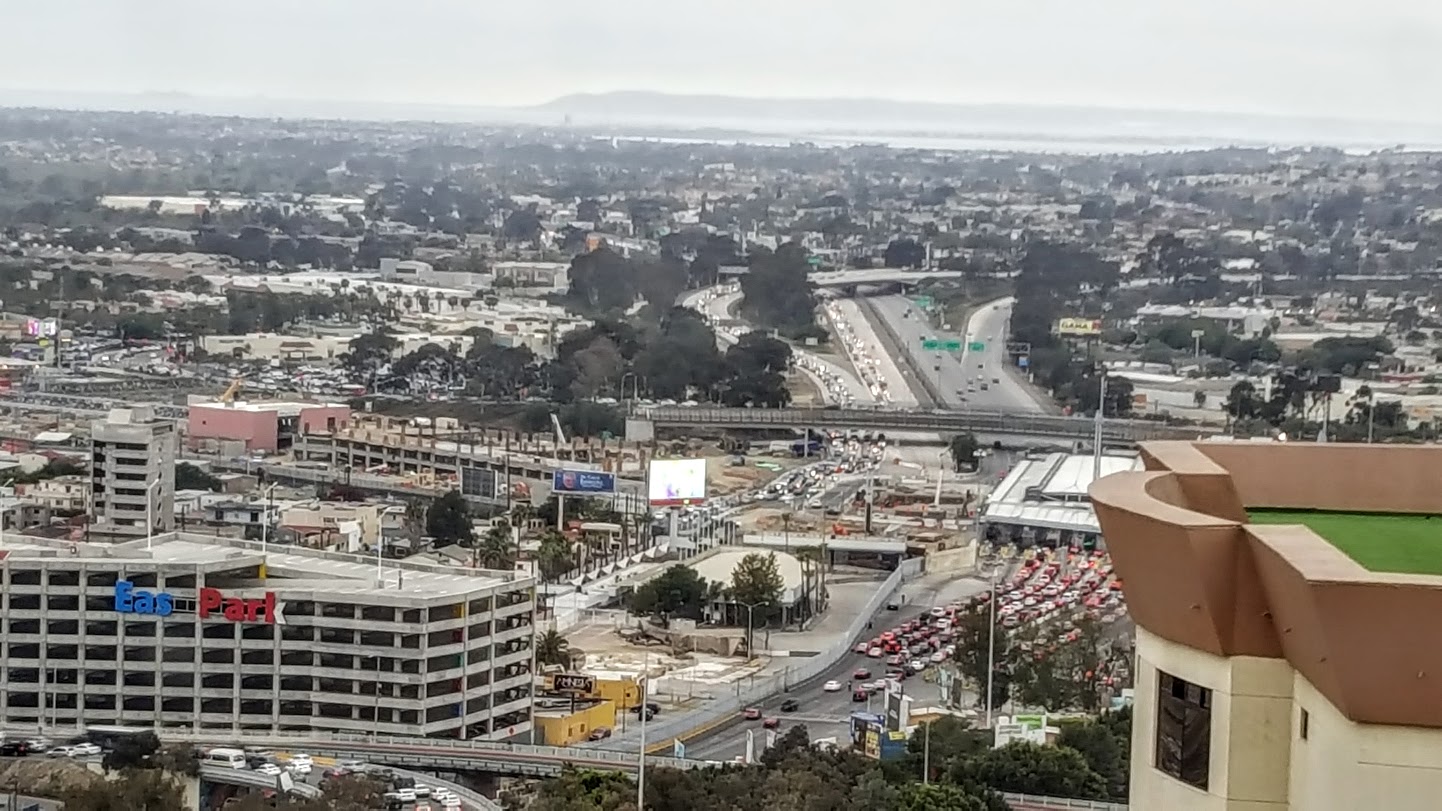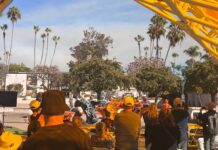In an era of fortified fencing, one new proposal aims to blur the international border between San Diego and Tijuana.
Architects, developers, and urban planners from the United States and Mexico are studying the tightly packed, heavily crossed areas that straddle the busy San Ysidro Port of Entry in a first-of-its-kind study by the Urban Land Institute of San Diego and Tijuana that looks at both sides as a single entity.
The all-volunteer team of nine professionals spent three days walking these neighborhoods where the two countries converge, talking to business and property owners to get a feel for the area’s challenges and opportunities.
“On either side of the border, it’s a big mystery what’s on the other side,” San Diego architect Frank Wolden, said on Wednesday afternoon as the group stepped past the decaying strip of fast food outlets, money exchange houses and mobile phone shops that line San Ysidro Boulevard. “The whole idea is in years and years of talking about this as a combined region, very little has been invested in doing much about that.”
At a Friday presentation of the preliminary findings by the group, known as a technical assistance panel, participants spoke of turning the area into a “world destination with local flavor” that would include breweries, wineries and other small businesses that invite passers-by to linger.
“Right now, it’s a place where you want to cross and drive away from,” said study participant Beryl Foreman, executive director of the El Cajon Boulevard Business Improvement Association.
Suggestions for the San Ysidro side included the creation of a hostel hotel for U.S. volunteers traveling to Mexico; the creation of a Friendship Park plaza; and redevelopment of the aging city-owned San Ysidro Service Center into a regional welcome center.
For Tijuana, participants recommended the redevelopment of the Viva Tijuana plaza, a vast mall near Mexico’s El Chaparral Port of Entry with many shuttered businesses. They envisioned a “mobility corridor” to connect foot traffic from the border to nearby medical facilities at a planned center at New City and the Pueblo Amigo mall, that has seen growing numbers of medical offices.
The $35,000 study was commissioned by the San Ysidro Chamber of Commerce and the Border Fusion Group, supported by property and business owners in Tijuana and San Diego.
Similar studies have been conducted by the Urban Land Institute, or ULI, in a number of San Diego neighborhoods, as well as south of the border. In previous studies, volunteer experts have looked at ways to revitalize downtown Tijuana and spur development on land adjacent to the Baja California Center, a convention facility that straddles Rosarito Beach and Tijuana.
But this latest effort is the first by ULI involving a cross-border area, one that Border Fusion founder Miguel Aguirre has long championed, and where he has called for measures that could instill “an international strategic sense of place.”
A major objective of the study is to understand the experience of thousands of pedestrians who cross between Tijuana and San Diego on a regular basis, a category that includes students, workers, shoppers, tourists and patients seeking medical treatment. The experts looked at ways to enhance their experience as they confront an uneven, often disconnected maze of walkways to get to their destinations.
The study comes amid much development activity at the border, especially on the Mexican side, where ambitious private plans to create a major medical tourism center by the border crossing are taking shape.
The study “is not an official document that has to be adopted, but now you have something coherent, professionally developed, so that we can go to authorities and say, ‘Let’s get on board, now we have a plan to make it happen,’” said Border Fusion advisor Flavio Olivieri.
This small, intensely crossed section of the border has been in a state of metamorphosis for several years with the upgrade and expansion of the San Ysidro Port of Entry. The multi-phase $741 million U.S. federal project expands both the northbound vehicle and pedestrian inspection processing capacity of the port, the busiest in the Western Hemisphere.
According to figures from U.S. Customs and Border Protection, an average of 23,000 pedestrians a day crossed northbound through the port last month through two different entry points located to the east and west of the vehicle lanes.
More than 60 percent of those crossers were processed at PedWest, an entry that opened in Juy 2016 and currently operates with 10 northbound lanes. Within weeks, authorities are expected to expand the pedestrian crossing capacity on the eastern side from eight lanes to 22 with the opening of a new PedEast inspection facility. The tentative opening date is July 31.
For Sunil Gakhreja, the owner of Sunny’s Perfume on San Ysidro Boulevard, the opening of PedEast offers hope that foot traffic from Mexico will return to their shops, which saw a dramatic drop in customers following the opening of the western entrance.
“I’m surviving because of my repeat customers,” Gakhreja told the ULI group, saying 99 percent of his clients are from Mexico.
Santiago Lim, who manages a family-owned parking lot in San Ysidro, said the ULI study brings more attention to an area that has been long overlooked by authorities and investors. “It’s such an important point in the country, and hasn’t been given the importance it deserves,” he said.
The ULI study, which is scheduled for final release in July, comes two years after the non-profit North American Research Partnership called for the creation of border “economic micro-zones” at similar pedestrian areas all along the U.S.-Mexico border.
The NARP study, which was sponsored by Border Fusion, called for a formal designation of these economic micro zones through legislation and bilateral agreements that could bring resources and create awareness of their importance.
San Ysidro and Tijuana are “the largest, most complex case of these economic micro-zones,” said Erik Lee, NARP’s executive director, who joined the group last week in walking through the area. “Lots of communities have similar issues along the border, that are very complicated to maneuver, very congested,” he said.
At the same time, “they are historically, commercially culturally unique areas for the United States and Mexico, and should be recognized at a bilateral level.”





